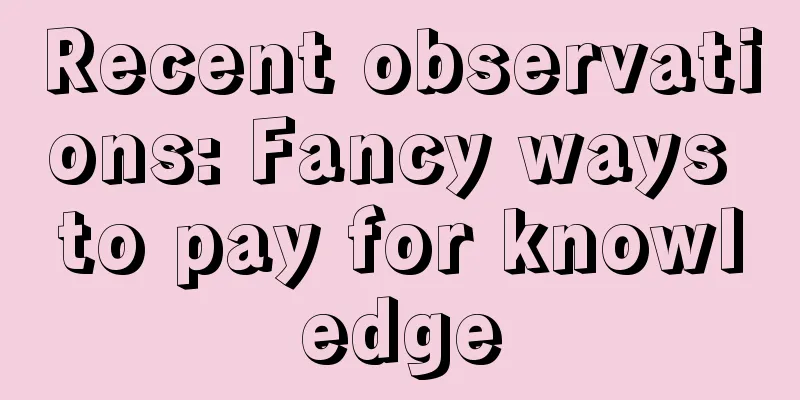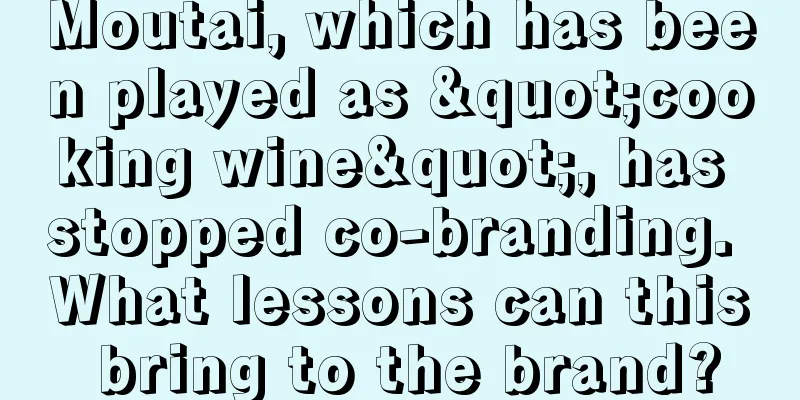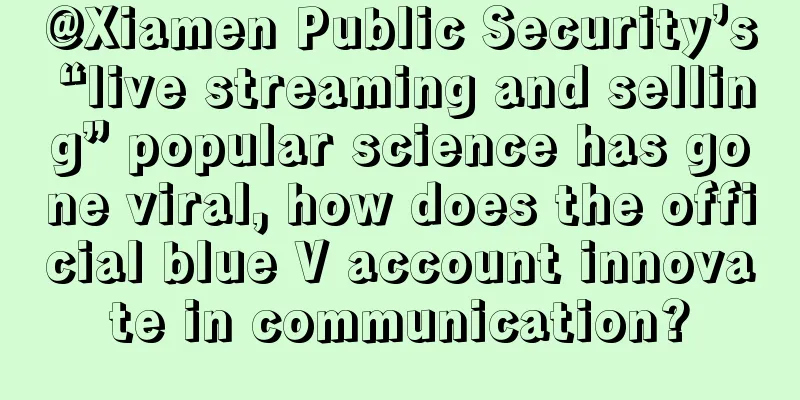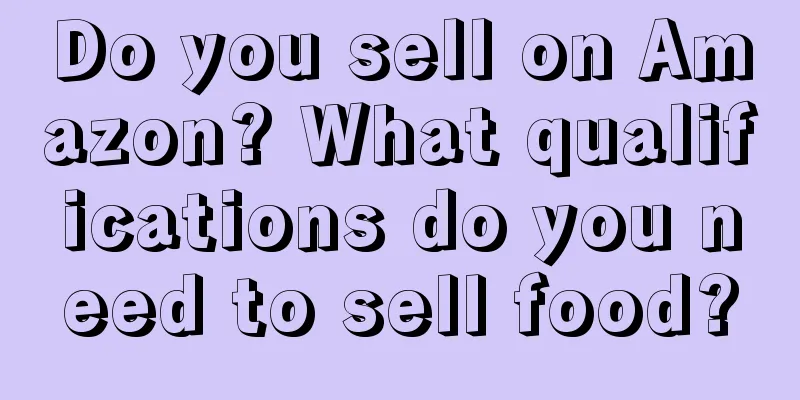Creating a recipe for a hit: How to ignite a marketing campaign

Every year, various marketing hot spots emerge in an endless stream, and creating hot spots and hot products has become one of the goals pursued by many brands. Rushing to the hot search, attracting enough attention, and arousing discussion are the effects that brand departments rack their brains to achieve. So do these creative ideas have some common elements, like the manufacturing formula of an atomic bomb, that can quickly ignite the enthusiasm of the public? In this article, we want to explore the common characteristics behind these events that have become marketing hot spots, trying to find a "hot spot formula" that can be borrowed and replicated . In the next article, we will continue this idea and combine it with the upcoming Spring Festival to provide "hot spot" inspiration for New Year marketing. First, let’s disassemble three marketing cases and analyze their core elements . From the three cases, we can see that each explosive event contains strong emotional output, with the help of precise symbol carriers, to ignite the topic at the right time . Marketing Hotspot 1: HEYTEA X Jingdezhen Porcelain Museum launches "Buddha HEYTEA Latte"Although the new "Buddha Heytea" was removed from the shelves after only one week online on November 28 due to religious reasons, this collaboration has undoubtedly made Heytea the focus of attention again after its collaboration with Fendi. In this collaboration, Heytea launched a customized joint cup with the characters of the Subduing Tiger Arhat, the Contemplating Arhat and the Joyful Arhat, and the set meal includes the surrounding "Buddha Heytea Fridge Magnet". The real name of the Speechless Bodhisattva is actually the Contemplative Arhat. This nickname came from the expression of the ceramic statue that looks very speechless. The Contemplative Arhat was also recreated because of his speechless expression, and a series of emoticons were derived and widely used by netizens. It became one of the most popular check-in spots at the Jingdezhen Ceramics Museum during the National Day holiday. Heytea took the opportunity to launch the most "speechless" joint name to be Buddhist with the workers (the homophonic origin of "Buddha Xi Latte"). If we break down this marketing event, we can see: Emotions that resonate with the target group : "Buddha" is no longer just a totem, but has become a social emotion. The cup of HEYTEA in your hand naturally becomes an expression of emotion, resonating with the helplessness of workers who are forced to involution, have to work overtime and other difficulties in the workplace, and their inner desire to lie down, give up, and be a Buddhist. Symbolic carriers of expressing emotions : Emotional expression requires not only an outlet, but also a carrier. The concrete form of Buddha is Bodhisattva. When people see the speechless Bodhisattva, relevant emoticons and scenes of complaining about work will automatically appear in their minds. Marketing Hotspot 2: Luckin Coffee X Moutai launches "Sauce Flavor Latte"The collaboration between Luckin Coffee and Moutai is probably so popular that even people in their 50s and 60s know about it, so I won’t go into details here. Disassembling the elements that made this collaboration so popular, we can also see: Emotions that resonate with the target group : Through the contrast and novelty of the co-branded affordable Luckin Coffee and the sky-high Moutai, the basic emotion in human nature is conveyed to the public - " expectation for surprises and surprises ". After all, who would have thought that Moutai, which is so high and mighty and hard to come by at 1,000 yuan a cup, would end up doing something with Luckin Coffee, which costs 9.9 yuan a cup, and suddenly become within reach? Symbolic carriers of expressing emotions : Moutai Baijiu. Behind the symbol of Moutai Baijiu is scarcity and high net worth. Moutai is not only a luxury national liquor brand, it also points to status, connections and even some kind of privilege. Therefore, when affordable coffee is integrated with the symbol of Moutai Baijiu, that is, the sauce-flavored flavor and the iconic red and white color combination, every consumer can immediately get a sense of contrast and novelty in taste and vision. Marketing Hotspot 3: Shandong Zibo BBQZibo barbecue has been frequently searched on Weibo in the first half of this year and has been reported by CCTV. In response, the local government and people of Zibo responded quickly, launching barbecue hotlines, barbecue industry license windows, barbecue cities, and all-citizen services for tourists to meet the explosive growth of tourists. If we explore the popularity of Shandong Zibo barbecue, we can see: Emotions that resonate with the target group : After the epidemic is fully lifted, people hope to release the depression and boredom that have been suppressed for a long time , and look forward to traveling and eating delicious food that they have not traveled for a long time. Symbolic carriers of expressing emotions : Barbecue. When it comes to barbecue, a typical image that comes to mind is sitting on the street drinking beer, eating skewers, chatting with a few friends, enjoying the breeze, and temporarily forgetting the troubles and pressures in life. Therefore , this street food with a strong sense of fireworks and that ordinary people can enjoy implies positive and high-energy emotions such as comfort, enjoyment, happiness, and holidays . Marketing opportunities : The sudden popularity of Zibo barbecue happened to coincide with the full lifting of the epidemic lockdown . At a time when everyone wants to go out and play but does not have many long holidays, it provides people with a weekend consumption and entertainment venue with direct high-speed rail access. By interpreting the above three marketing cases, we can see that the rule for generating hot spots is : abstract emotions are amplified and expressed through concrete symbols, thus forming communication . The right marketing timing can serve as a blessing to further promote the communication of marketing activities. In summary: Breaking point = emotion x symbol + timing In order to have a deeper understanding of this “explosive formula”, we will further explain these three elements that trigger marketing events. 1. What are emotions?The emotions here can be either social sentiment or the basic emotions in human nature . “Social emotions refer to the emotional experiences shared by a certain group or groups or the majority of people in a certain social environment. Therefore, social emotions are not the superposition or mixture of individual emotions, but the result of interactions between individuals, between individuals and groups, and between groups.”[1] In other words, social emotions are not innate; they arise when individuals establish connections with the outside world . For example, social emotions that are often discussed recently include "sit-ups, lying flat, national pride" and so on. In the above marketing case, the popularity of "Fo Xicha" expresses the social emotion of workers pursuing Buddhism in the context of internal competition. The emotion of being tired of internal competition, pursuing Buddhism, and hoping to lie flat is not innate to everyone. It is a mentality that young people develop when they face an increasingly competitive social environment and cannot see positive returns. Basic emotions are common to both humans and animals. They are acquired without learning and are also called primitive emotions . They have cultural commonality. [2] American psychologist Dr. Ekman divides people's basic emotions into six categories: anger, disgust, fear, happiness, sadness, and surprise. In other words, basic emotions are an instinctive reaction that everyone is born with. In the above case, the joint venture between Luckin Coffee and Moutai creates a sense of surprise that is generally popular among the public through contrast and novelty. Back to the creative formula of marketing hot spots, for a brand, to create a hot spot, it is necessary to accurately find one that caters to the current social emotions, especially those of the target population . 2. What is a symbolSemiotics is listed as a separate subject in some universities. Here we can simply understand a symbol as a sign or representation of a certain thing or emotion . The purpose of a symbol is to express meaning . It is a sign that can inspire some associations, and the associations (that is, the meaning expressed) generated by the same symbol can reach a consensus among a group of people. For example, when people mention the Statue of Liberty, they think of the United States, and when they mention the heart shape, they think of love. So here the Statue of Liberty is a symbol, one of the meanings it expresses is the United States, and the heart shape is a symbol of love. I believe you have discovered that a symbol expresses abstract concepts and meanings in the public's common cognition (called "signified" in semiotics, such as the United States, love, etc.) through a real and concrete thing (called "signifier" in semiotics, such as the Statue of Liberty and the heart shape) . The understanding of symbols needs to be in a specific social context. If it is separated from the social context, the same symbol may extend different meanings and no consensus can be reached. For example, red may be understood as a taboo in the West, but it often represents celebration and joy in China. Therefore, red, as a symbol representing celebration in the Chinese social context, can be used by a wedding company as the main visual marketing, but if it is copied in the West, it will fail. For another example, the image of the dragon has very different meanings in Eastern and Western cultures. Symbols that carry explosive emotions must be culturally meaningful . They need to be typical (e.g. Moutai is a very typical Chinese luxury brand) and have consensus (e.g. Silent Bodhisattva is well known and discussed by netizens). Without the social context, it is difficult for symbols to carry the emotions that the brand wants to express, and the visuals or slogans cannot hit consumers in one second. 3. What is timing?Timing refers to a certain time point when an activity is marketed . For example, Zibo, Shandong may only be popular in the first half of the year, but it is difficult to be popular in the second half of the year. In fact, if you search for Zibo barbecue on Weibo now, the pop-up is #Zibo barbecue practitioners are now all how#. It can be seen that once the marketing opportunity is over, the hot spot itself may also be forgotten by the public. Timing is a contributing factor to the formation of a hot spot, but it is not necessarily a necessary factor . For example, it is difficult to say that the joint branding of Luckin Coffee and Moutai hit the right marketing timing. The key to its explosion is the choice of Moutai as an expression symbol, which makes this highly contrasting joint brand have its own communication attributes. After explaining these three elements of the hot spot, we can better understand why "emotion and symbol" are connected by a multiplication sign, while "timing" is connected by a plus sign . Because emotion and symbol are necessary elements to become hot spots, if any one of them becomes 0, the value of the other one will eventually be 0 no matter how high it is . Timing is a part that adds icing on the cake . The formation of some hot spots does not necessarily depend on a specific timing, such as the two joint cases mentioned above. IV. SummaryWhen doing brand analysis, we are often asked how to create a hot spot for marketing activities. Perhaps we can use the thinking framework of "hot spot = emotion x expression symbol + timing" to avoid being at a loss when facing similar topics in the future. When a brand tries to create a hot spot, it can first answer the following three questions:
To answer these questions well, our sensitivity to the market and target groups is very important, as is our intuitive judgment. Marketing research can help answer these questions in a more systematic and rational way . For example, through culture analysis, we can monitor and capture the current social trends and public sentiments . In-depth interviews with target consumers can help us deeply understand their emotional needs, anxiety, struggles and aspirations. Finding the right symbol is not an easy task. It must be able to convey emotions and be related to the brand. This requires extensive research, screening and testing . Finally, we would like to remind everyone that a hot spot is a short-term marketing activity, and it is only a part of long-term brand building. Do not regard a hot spot as a permanent brand popularity. Otherwise, you will be like an out-of-date singer, singing a hit song that is only once in a blue moon until the halo fades. We welcome everyone to share your views on the “explosive formula” we proposed, and work together to polish, improve and iterate it. References: [1] Wang Junxiu. (2016). Governance of social emotions and social feelings in the new media era. Exploration and Debate (11), 4. [2] Darwin, C. (1872/1998). The expression of the emotions in man and animals (3rd ed.). New York: Oxford University Press. [3] Ekman, P., Sorenson, ER, & Friesen, WV (1969). Pan-cultural elements in facial displays of emotions. Science, 164,86–88 Author: Researchism WeChat public account: Researchism Consultancy (ID: ResearchismCo) |
<<: Messi sells wine to "send blessings", will fans respond?
>>: When Tik Tok puts a "tight ring" on anchors
Recommend
I finally made it clear what the underlying logic of data-driven growth is
Introduction: Growth effects always make people fe...
Is the pet economy market a blue ocean or a bubble?
This article introduces the rapid growth of China&...
Catering is trapped by low prices, and group buying destroys the experience?
"Group buying special offers, compete for a g...
“Pay first, eat later”, can the paid membership system really save Xiabu Xiabu?
Xiapu Xiabu is a chain hotpot brand that uses a me...
What is the job of wish operation? How much commission is there per month?
In the e-commerce industry, Wish operation is a ke...
Can Amazon sell virtual items? Is it easy to sell virtual items?
The profit margin of physical products is actually...
What is the difference between Amazon advertising portfolio and ad group? How to set up ad group?
When operating the Amazon platform, I believe that...
How is Amazon's review rate calculated? What is it generally?
As one of the world's largest e-commerce platf...
Brand No. 1: Why the more anxious you are, the harder it is to grow
Why do companies need to think about growth? This ...
Why is there no order after dozens of clicks on Amazon? Analysis of the reasons
Merchants who run Amazon stores have more or less ...
After Manner employees collapsed, Luckin workers couldn't sit still
After the three Manner incidents fermented, the me...
Are the AI ads everywhere on the streets a major downgrade in aesthetics?
AI aesthetics is beyond human control. Oops, you a...
From scale profit to service profit, the logic of hotel business has really changed
The hotel industry is shifting from "waiting ...
These 9 sentences of 618 copywriting are a breath of fresh air
As 618 approaches, consumers are ready to spend mo...
When merchants operate Xiaohongshu, they should not ignore these 8 basic settings
How to set up the basics of a professional account...









